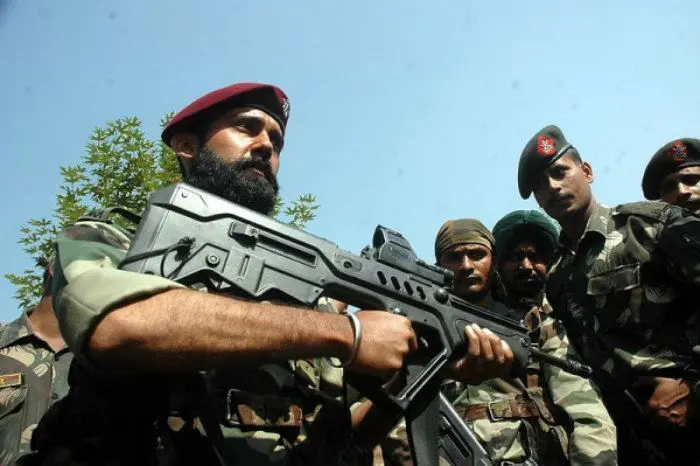The 9 Para (Special Forces) has established a distinguished reputation within the Special Forces community and among enthusiasts. Having commemorated its 58th raising on July 1, 2024, the unit has earned the nickname ‘Ghosts’ over years of its covert and high-risk special operations. This reputation has led to a growing number of young aspirants eager to join this elite regiment.
Raising of the Ghosts
The Indian Army traditionally had no special forces units or battalions, even during World War II, apart from a lone mobile strike and reconnaissance unit. While there are reports of a commando company during the 1947-48 war, the formal establishment of special forces units began in 1965. Major Megh Singh volunteered to raise a commando unit to operate behind enemy lines in Pakistan-occupied Kashmir (PoK) and destroy infiltrators’ launching pads. The unit, known as Meghdoot Force, was a significant success, notably aiding in the capture of the Haji Pir Bulge.
The 9th Battalion, Parachute Regiment (Commando), now known as the 9 Para SF (Special Forces), originated from the Meghdoot Force led by Major Megh Singh. Officially established in July 1966 in the South Block of the Ministry of Defence (MoD), the unit marked the inception of the Indian Army’s first Special Operations unit. Lieutenant General Harbaksh Singh served as the first Commanding Officer (CO) of the 9 Para SF.
From Commando Regiment to Para SF
In 1979, the 1st Battalion, Parachute Regiment, underwent a trial conversion into a Special Forces battalion based on the British Special Air Service (SAS). After a three-year conversion period, it was re-designated as a Special Forces Battalion. Subsequently, the two Parachute Commando battalions (9 and 10) were also re-designated as Special Forces battalions. Eventually, the term “Commando” was replaced with “Para (Special Forces),” solidifying their identity as special forces units within the Indian Army.

Why ‘Ghosts’?
Known for their varied tactical and operational skills, 9 Para earned the nickname ‘Ghosts’ due to their secretive operations. Many believe that 9 Para soldiers operate like an independent organization given the multitude of covert missions they undertake. The battalion is also referred to as ‘Mountain Rats’ due to their specialization in mountain warfare. The 9 Para SF has proven their prowess both domestically and internationally, underscoring the importance of SF units in unconventional warfare.
Throughout its history, 9 Para SF has achieved several significant milestones. Notable operations include their involvement in the 1971 Indo-Pak war, Operation Blue Star in 1984, and numerous counter-insurgency operations in Jammu and Kashmir. Their role in rescuing hostages and neutralizing terrorist threats has cemented their legendary status.

Involvement in Uri Surgical Strike
Following the Uri terror attack in 2016, there was a strong sentiment for retaliation in India. Ten days later, 9 Para SF, along with 4 Para SF, executed surgical strikes in PoK at multiple locations, destroying terrorist launchpads. According to many sources, the operation began with Indian forces firing artillery across the frontier to provide cover for three to four teams of 70–80 soldiers from the 4th and 9th battalions of the Para SF. These teams crossed the LoC at several points shortly after midnight on September 29. Teams from 4 Para crossed the LoC in the Nowgam sector of Kupwara district, while teams from 9 Para simultaneously crossed the LoC in Poonch district. By 2 a.m. IST, the special forces teams had travelled 1–3 km on foot and had begun destroying terrorist bases with hand-held grenades and 84 mm rocket launchers.
Deployment in Jammu & Kashmir
Headquartered in Udhampur, the 9 Para SF is permanently based in Kashmir, seeing action year-round due to the region’s volatile situation. The 9 Para SF has been a critical component of the Indian Army’s counter-terrorism strategy in Kashmir, known for their elite training and operational expertise. Deployed in the most challenging and hostile terrains of the region, these operators conduct a variety of missions, from intelligence gathering and surveillance to direct action raids against militant hideouts. They carry out many specialized and highly secretive counter-insurgency operations across the Line of Control and the Kashmir Valley. The 9 Para SF’s presence in this region has been crucial in combating infiltration from IB & LoC and preventing terrorist operations.
New Additions to Para SF Units
The 13 Para Special Forces (13 Para SF), also known as “Thunderbolt Thirteen,” is one of the newest additions to the elite Para (Special Forces) units of the Indian Army. Officially formed in 2022, this battalion was part of ongoing efforts to bolster India’s special operations capabilities. The raising of the 13 Para SF followed the establishment of the Armed Forces Special Operations Division (AFSOD) in 2019, reflecting a strategic shift towards enhancing India’s offensive and unconventional warfare capabilities, particularly in challenging terrains like mountainous regions. With this addition, the Indian Army now boasts 10 Para SF and 5 Para Airborne battalions, strengthening its capacity for special operations. The tales of these formidable forces, which are numerous, give goosebumps and raise a sense of pride.
The tales of these formidable forces, which are numerous, evoke goosebumps and inspire a deep sense of pride. From daring covert operations to their spiritual experiences, their stories encapsulate the courage and commitment displayed on the battlefield. These stories should be known by all, honouring the sacrifices that safeguard our freedoms, because- freedom doesn’t come free; only a few pay its cost.

